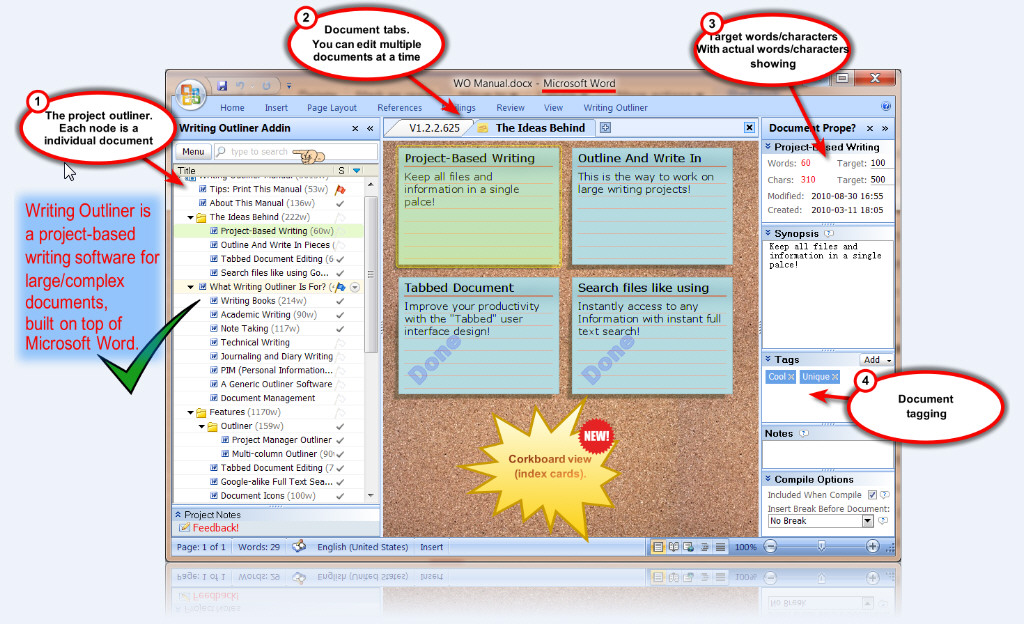

Ī two-pane outliner separates structure from content-the structure is extrinsic to the text. Some word processors, such as Microsoft Word, have an Outline Mode to help with structuring documents. The drawback is that, because the structure is not always visible, there is not as strong an overview of the whole or ability to quickly navigate between sections as with a two-pane outliner. One of the strengths of one-pane outliners is that, because the text itself is what is structured and because several nodes of text are visible at once, it is easy to edit across sections. Everything is displayed within a single area, hence the term one pane. There are two basic types of outliners: one-pane or intrinsic, and two-pane or extrinsic, each with its strengths and weaknesses.Ī one-pane outliner is known as an intrinsic outliner because the text itself is organized into an outline format-individual sections (such as paragraphs) of text can be collapsed or expanded, while keeping others in view.

Some outliners also allow the user to create custom fields and/or filter on fields. This data can be shown as columns of data in the outline or as fields in the second pane (see 'Layout' below). Fields/Columns: Items can also have additional fields of information.File import and export: Both the content and structure of outlines are conveyed when files are imported or exported (e.g., from and to tab-indented files).
Free opml editor outliner plus#

The principal attribute of outline editors is that they support or enforce the use of a hierarchy of their items.
Free opml editor outliner movie#
They are also used for goal and task management (including personal information management and project management), and for writing books and movie scripts.Īn alternative to outliners are mind mappers, which display a tree structure as a node–link diagram. Outliners are ideal for managing lists, organizing facts and ideas, and for writing computer programs. Outliners may be used in content creation instead of general word processors for capturing, organizing, editing, and displaying knowledge or general textual information. In other words, as a hand-written work an outline is a writing tool, but on a computer, it is a general purpose format supported by a robust development and display medium capable of handling knowledge from its creation to its end usage. The main difference between a hand-written outline and a digital one is that the former is usually limited to a summary or blueprint of a planned document, while the latter may easily include all of the content of the entire document and many more. This eliminates the need to have separate documents, as outlines easily include other outlines just by adding to the tree. An outline in an outliner may contain as many topics as desired. So rather than being arranged by document, information is arranged by topic or content. Outliners are used for storing and retrieving textual information, with terms, phrases, sentences, or paragraphs attached to a tree. When loaded into an outliner, an outline may be collapsed or expanded to display as few or as many levels as desired. Textual information is contained in discrete sections called "nodes", which are arranged according to their topic–subtopic (parent–child) relationships, like the members of a family tree. An outliner (or outline processor) is a specialized type of text editor ( word processor) used to create and edit outlines, which are text files which have a tree structure, for organization.


 0 kommentar(er)
0 kommentar(er)
